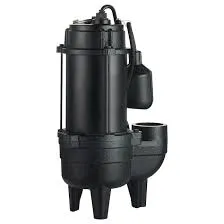Swahili
- Afrikaans
- Albanian
- Amharic
- Arabic
- Armenian
- Azerbaijani
- Basque
- Belarusian
- Bengali
- Bosnian
- Bulgarian
- Catalan
- Cebuano
- Corsican
- Croatian
- Czech
- Danish
- Dutch
- English
- Esperanto
- Estonian
- Finnish
- French
- Frisian
- Galician
- Georgian
- German
- Greek
- Gujarati
- Haitian Creole
- hausa
- hawaiian
- Hebrew
- Hindi
- Miao
- Hungarian
- Icelandic
- igbo
- Indonesian
- irish
- Italian
- Japanese
- Javanese
- Kannada
- kazakh
- Khmer
- Rwandese
- Korean
- Kurdish
- Kyrgyz
- Lao
- Latin
- Latvian
- Lithuanian
- Luxembourgish
- Macedonian
- Malgashi
- Malay
- Malayalam
- Maltese
- Maori
- Marathi
- Mongolian
- Myanmar
- Nepali
- Norwegian
- Norwegian
- Occitan
- Pashto
- Persian
- Polish
- Portuguese
- Punjabi
- Romanian
- Russian
- Samoan
- Scottish Gaelic
- Serbian
- Sesotho
- Shona
- Sindhi
- Sinhala
- Slovak
- Slovenian
- Somali
- Spanish
- Sundanese
- Swahili
- Swedish
- Tagalog
- Tajik
- Tamil
- Tatar
- Telugu
- Thai
- Turkish
- Turkmen
- Ukrainian
- Urdu
- Uighur
- Uzbek
- Vietnamese
- Welsh
- Bantu
- Yiddish
- Yoruba
- Zulu
Telephone: +86 13120555503
Email: frank@cypump.com
Novemba . 30, 2024 06:20 Back to list
sewage ejector pump system
Understanding Sewage Ejector Pump Systems
Sewage ejector pump systems play an essential role in modern wastewater management, particularly in homes and buildings that are located below the municipal sewer line. These systems consist of specially designed pumps that lift wastewater from lower elevations, enabling it to flow into the sewer system. Understanding how these pumps work, their components, and their maintenance is crucial for effective wastewater management.
What is a Sewage Ejector Pump?
A sewage ejector pump is a type of submersible pump specifically engineered to handle sewage and wastewater that contains solid particles. Unlike standard sump pumps, which primarily manage stormwater and groundwater, sewage ejector pumps are equipped to deal with a more complex mixture of waste. These pumps feature a grinder or impeller that shreds solid waste before it is pumped to the sewer line, preventing clogs and ensuring smooth operation.
Key Components of Sewage Ejector Pump Systems
1. Pump The core of the system, the pump, is responsible for lifting the wastewater. These pumps are commonly submersible, meaning they are installed below the water level in a pit or basin.
2. Basins A sewage pump basin collects wastewater from various sources, such as toilets, sinks, and washing machines. The basin protects both the pump and the surrounding environment from potential overflow.
3. Check Valve A check valve is an essential component that prevents backflow of sewage into the basin after the pump has done its job. This is critical for maintaining sanitation and hygiene.
4. Float Switch Float switches monitor the water level in the basin. When the water level rises to a predetermined point, the float switch activates the pump to begin pumping waste.
How Does a Sewage Ejector Pump System Work?
sewage ejector pump system

The operation of a sewage ejector pump system is straightforward yet efficient. Wastewater from various fixtures in a home is directed into the pump basin. As the water level rises, the float switch activates the pump when the water reaches a certain height. The pump then grinds and ejects the wastewater through a discharge pipe to the municipal sewer line or a septic system.
This process allows properties situated below the sewer line to efficiently handle their waste, thereby maintaining sanitary conditions. It's a crucial infrastructure component in areas where gravity-based drainage is not feasible.
Maintenance of Sewage Ejector Pump Systems
While sewage ejector pump systems are robust and designed to last, regular maintenance is vital to ensure their longevity and performance. Here are some maintenance tips
1. Regular Inspections Check the pump and basin periodically for any signs of wear, damage, or blockages. Inspecting the float switch is also critical to ensuring it operates correctly.
2. Clean the Pump and Basin Over time, solids can accumulate in the basin. Cleaning this area helps to prevent clogs and other issues.
3. Test the System Run water through the system periodically to ensure that the pump activates and operates as it should.
4. Professional Servicing Consider hiring a professional plumber or technician for an annual inspection and maintenance check. They can identify potential issues that may not be evident to the average homeowner.
5. Educate Users Inform household members about what should and shouldn't be flushed down the toilet. Items like wipes, feminine hygiene products, and excessive food waste can cause significant issues.
Conclusion
Sewage ejector pump systems are indispensable for effective wastewater management in homes and buildings where gravity drainage is insufficient. Understanding how these systems work, their components, and the importance of regular maintenance can help homeowners prevent costly repairs and ensure a sanitary living environment. As urban density increases and more homes are built in low-lying areas, the reliance on such systems will continue to grow, underscoring the need for awareness and education on their operation and upkeep.
-
Heavy-Duty Mining Sludge Pumps - Wear-Resistant Slurry Handling
NewsAug.02,2025
-
Horizontal Split Case Pump with GPT-4 Turbo | High Efficiency
NewsAug.01,2025
-
ISG Series Pipeline Pump - Chi Yuan Pumps | High Efficiency, Durable Design
NewsAug.01,2025
-
Advanced Flue Gas Desulfurization Pump with GPT-4 Turbo | Durable & Efficient
NewsJul.31,2025
-
ISG Series Vertical Pipeline Pump - Chi Yuan Pumps | Advanced Hydraulic Design&Durable Construction
NewsJul.31,2025
-
ISG Series Vertical Pipeline Pump - Chi Yuan Pumps | Energy Efficient & Low Noise
NewsJul.31,2025










